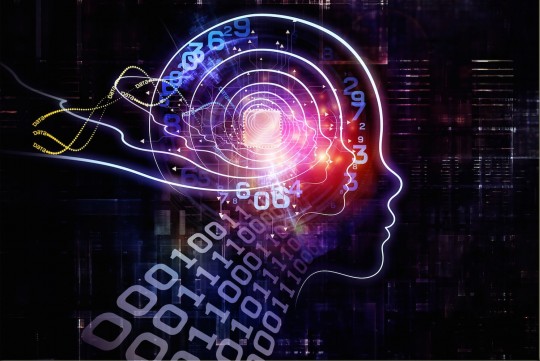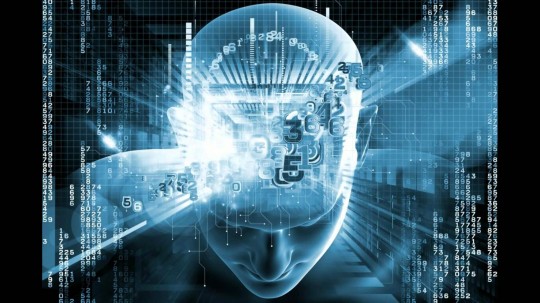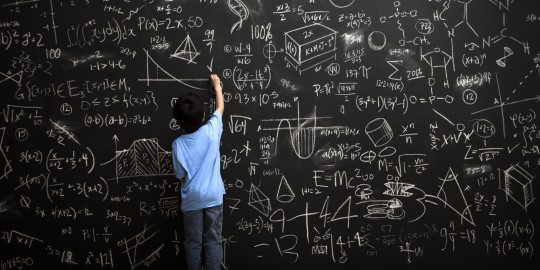Can AI Ever Usurp The Brain As The Greatest Piece Of Technology Ever?

With 13 billion neurons and the ability to process trillions of packets of data, our brain is by far the most advanced piece of technology on the planet. Forget Apple’s latest iPhone or the government supercomputer, our brains are capable of thinking on a level that no other piece of equipment can.
However, that hasn’t stopped scientists from taking on the mammoth task of trying to create an artificial brain that’s as powerful as our own. Research into artificial intelligence (AI) has been taking place since the ‘40s and, despite falling short, the quest for a manmade brain is still going strong today.
Indeed, a quick look through the top tech innovations of 2016 reveals an array of related products, such as the Samsung S7, that can process data and start to predict what we’re about to type (in a text message). However, as impressive as that might be, it really doesn’t compare to what our brains can do.
Now, this isn’t to say that we’ve not come close to replicating human intelligence in computers. Symbolic AI evolved from early work done by the US and Germany as military exercises, and today it’s a branch of study that attempts to classify human thought in declarative forms. Working on the assumption that we can program a computer to obey a series of facts and subsequent rules, symbolic AI researchers have had some success in competitive endeavors.
Small Steps With Symbolic AI
Probably the most famous example of symbolic AI‘s success occurred in the game of chess. Being a turn-based game with a fixed structure, chess fits nicely into the fact (information on a certain position) and rule (this move is possible and X is more effective than Y) binary that symbolic AI subscribes to. IBM’s Deep Blue is the leading chess computer and showcased its skills in a series of famous matches with Russian Grand Master, Garry Kasparov.
As one of the greatest chess players of all time, Kasparov is able to think around 15 moves ahead but, following a series of intense battles that began in 1996, he was eventually defeated by IBM’s creation in 1997. Part of Deep Blue’s success was its ability to evaluate 200 million positions per second and plan as many as 20 moves ahead.
This capacity for processing millions of facts and rules per minute, coupled with Deep Blue’s immunity to getting tired or losing focus, meant that the computer was able to outperform the human brain in a very specific task. However, as psychologist and cognitive neuroscientist Michael Gazzaniga has pointed out, our brains are “holistic” and, unlike computers, their components aren’t distinct.
A Step Too Far For Symbolic AI
A shining example of this dynamic was recently demonstrated in an experiment involving professional poker players and a computer known as Claudico. Playing a series of heads-up (one on one) matches at Claudico’s home, Carnegie Mellon University, Doug Polk, Bjorn Li, Doug Kim and Jason Les went on to beat the computer over the course of 80,000 hands.
Unlike chess, poker and in particular No Limit Texas Hold’em is a game of unknown variables and that makes determining the “perfect move” extremely difficult. Moreover, because different players use different approaches (whereas chess players try to follow a set range of moves), poker has proved a tough game for symbolic AI researchers to crack.
Even a review of the standard rules and skills involved in poker don’t make things any easier. While it’s entirely possible to read Chess Central’s article on opening moves and pick up an insight into general strategies, it’s much tougher to do this in poker. Players, both human and robotic, like Claudico, have to take the time to consider statistics, psychology, strategy and a whole array of variables that are not easily broken down into simple rules, like in chess. Even if you’re not a poker enthusiast, looking at a poker strategy guide makes it clear that the popular card game goes way beyond calculating moves. For example, there are four areas a player must master if they want to succeed: tight play, aggressive play, random play and taking advantage of opponents’ mistakes. These also serve to help analyze opponents’ mentality and strategy in order to come up on top.
However, as the strategy guide also notes, these skills are just the basics and to become a strong player takes time and effort. To make things even trickier, every player tends to have different strengths. From the aforementioned pros, Polk is a master online player and uses mathematics to employ an aggressive strategy, whereas Kim prefers live games and bases a lot of his moves on an opponent’s mannerisms and bets.
Therefore, Claudico had to adapt to more variables than Deep Blue, making its job infinitely tougher. Because a player like Polk makes moves based on objective data, such as cards, stack sizes and previous betting, as well as subjective data, such as previous moves, mood and psychology, it’s much harder for the computer to read the action.
AI Starting To Shine
Although Claudico ultimately lost, the experiment was considered a success because the humans won by a margin of less than 1%. In total $170 million was wagered (in virtual chips) and the human team won by $732,713, which is less than half of 1% of the total amount bet. In scientific terms, that’s, at worst, a neutral result, according to the lead developer of Claudico, Tuomas Sandholm.
The latest approach used by Claudico and similar computers is based on a cognitive architecture design. Known as a hybrid system, starting with sub-symbolic components and moving up to symbolic AI, this approach takes into account a range of AI fields in an attempt to replicate the human brain.
Confidence Can Be Objective
According to Professor Adam Kepecs, a neuroscientist at Cold Spring Harbor Laboratory, we make a move based on how confident we are in that move being “right.” Through a series of experiments, Kepecs has suggested that this confidence is the result of objective calculations. Essentially, our brains consider a range of internal variables to come to a conclusion about confidence.
The assertion that our brains use objective calculations to determine what we have traditionally seen as an emotion (i.e. confidence) may help AI researchers to enhance the capabilities of their computers. Machines that are capable of assessing their own confidence will progress beyond X is the right move over Y protocol which, in a game such as poker, could be the difference between a win and a defeat.
Computers and our brains might essentially serve the same function in a lot of cases, but it’s clear that the latter is still more advanced than the former. However, technology is catching up all the time. Indeed, as computers become more advanced the “thinner” iPad (otherwise known as the Samsung Galaxy Tab S2) and the most revolutionary apps of 2015 will start to look a little dated in comparison to machines that can think autonomously in the same way that we do.











